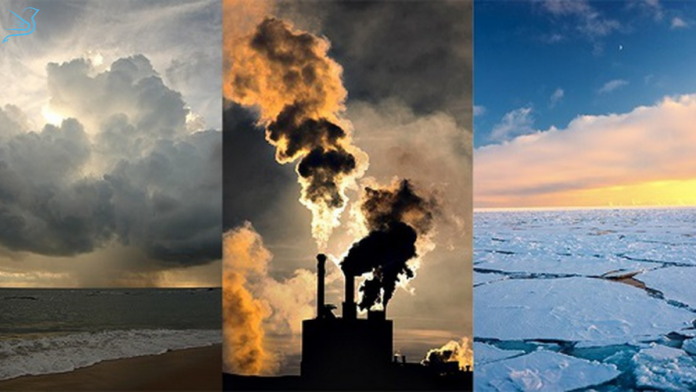On the eve of the G20 meeting in Italy, the CMCC Foundation-Euro Mediterranean Center on Climate Change announced the G20 Climate Risk Atlas. A series of country fact sheets summarising impacts, policies, economics, and scientific projections of how climate impacts will develop in the world’s most industrialised nations over the next few decades was released.
Read our carefully to know all the key points of the report.
About the Report
Based on the most advanced scientific knowledge available on this topic, this study is the first of its kind. Atlas is designed with a combination of infographics, maps, and short narrative descriptions in simple languages. It provides climate scenarios, information, data and future changes in climate across the G20 countries.
The report said that the G20 (Group of 20) countries including the wealthiest like the US, European countries, and Australia will bear extreme impacts of climate change over the coming years.
Key Findings of the Report
Impact on G20 Countries:
Heatwaves:
The research shows that rising temperatures and intense heat waves could cause severe droughts and deadly fires.
Heatwaves could last at least ten times longer in all G20 countries, with heatwaves in Argentina, Brazil and Indonesia lasting over 60 times longer by 2050. In Europe, deaths from extreme heat could rise from 2,700 per year to 90,000 each year by 2100 on a high emissions pathway.
In Australia, bushfires, coastal floods and hurricanes could raise insurance costs and reduce property values by 611 billion Australian Dollars by 2050.
GDP Loss:
GDP losses due to climate damage in the G20 countries will increase each year, rising to at least 4% each year by 2050. This could reach more than 8% by 2100, which is twice the economic loss of the block due to COVID-19.
Some countries, such as Canada, will be hit even more seriously, with at least 4% knocking off GDP by 2050 and potentially knocking out more than 13% (€ 133 billion) by 2100.
Sea Level Rise:
Rising sea levels could damage coastal infrastructure within 30 years, with Japan expected to lose 404.0 billion euro and South Africa 815 million euro through high emission routes by 2050.
Flooding:
Expected annual damages from riverine flooding by 2050 are estimated to be 376.4 billion Euro under a low emissions scenario and rise to 585.6 billion EUR under a high emissions scenario.
Impact on India:
Emission Scenarios:
Low Emission (emissions lower than in present):
Projected temperature variations will remain contained under 1.5 degree celsius , both by 2050 and 2100.
Medium Emission (same as present):
Between 2036 and 2065, the maximum temperature of the warmest month in India could rise by at least 1.2 degree celsius in a medium emission pathway.
High Emission (higher than present):
By 2050 under a high emission scenario average temperature could rise to 2 degree celsius.
Rainfall:
Annual rainfall is likely to record a steep increase by 2050 with an 8% to 19.3% increase in all emission scenarios.
Economic Impact:
In India, declines in rice and wheat yields due to climate change could lead to economic losses between 43 and 81 billion euro (or 1.8-3.4% of (GDP) and a loss of 15% of farmers’ incomes by 2050.
Water demand for agriculture is likely to rise around about 29% by 2050 – meaning yield losses are likely to be underestimated.
Heatwaves:
Heatwaves in India will last 25 times longer by 2036-2065 if emissions are high (4°C), over five times longer if global temperature rise is constrained to about 2°C, and one and a half times longer if emissions are very low and temperature rise only reaches 1.5°C.
Agricultural Drought:
On a pathway to 4°C global heating, agricultural drought will become 48% more frequent by 2036-2065.
On a 2°C pathway (the maximum temperature agreed by the Paris Agreement) this drops to 20% more frequent, and constraining temperature rise to 1.5°C (the aspirational goal of the Paris Agreement), agricultural drought will still be 13% more frequent.
Flooding:
Under 18 million Indians could be at risk of river flooding by 2050 if emissions are high, compared to 1.3 million today.
Labour:
Total labour is expected to decline by 13.4% under a low emissions scenario by 2050 due to the increase in heat, and by 24% under a medium emissions scenario by 2080.
Food Security:
The agricultural sector in India is particularly vulnerable to the effects of climate change such as increasing temperatures and variability in rainfall. This will have significant repercussions for the Indian economy and the country’s food security that relies mostly on domestic production to meet the needs of a growing population.
In India, declines in rice and wheat production could spark economic losses of up to Euros 81 billion by 2050 and a loss of 15% of farmers’ incomes by 2100. and a loss of 15% of farmers’ incomes by 2050.
Epidemiological risks:
Epidemiological risks from dengue and Zika will increase due to future climate change in India. Under a medium emissions scenario, 98.1% of the population will be at risk of transmission-suitable mean temperatures for dengue by 2050, whereas 97% will be at risk under a high emissions scenario. In the case of Zika, 97.2% of the population will be at risk by 2050 under medium emissions.
The report finds that without urgent action to reduce carbon emissions, GDP losses due to climate damage in G20 countries increase each year, rising to at least 4% annually by 2050. Even with lower emission scenarios impact could be very severe. All countries should commit to reducing GHG emissions.
Keep reading on hranker.com for more updates.




